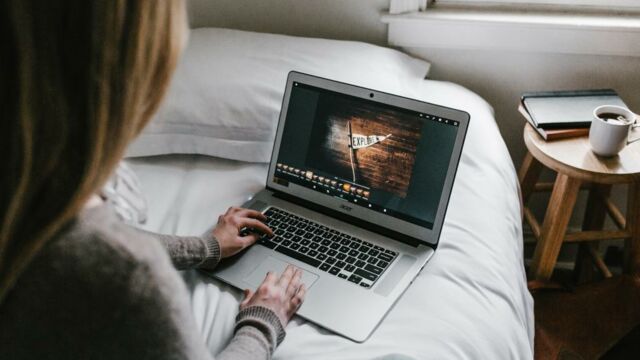Working from home has become the norm for many of us these days but it hasn't always been the best option for some. Whether it's because you can't seem to concentrate, generate the productivity that is needed or because you simply just don't have adequate space for a 'home office', many have found themselves having a hard time adjusting to working from home, especially when that involves working from your own bed.
Discover our latest podcast
Discouraged by medical experts
Medical experts believe that beds should be reserved for two things only: sleep and sex. Anything else might disrupt your sleep pattern because your mind will stop associating your bed with sleepy time.
But we understand that living with two, three and some times even upwards of three roommates might make it impossible to avoid working from the comfort of your own bed.
During the first lockdown, a survey conducted by Uswitch.com found that 25% of home workers had worked from their bed at one point in time. And as things have progressed, that number have proportionally increased as well. Catherine Quinn, president of the British Chiropractic Association, said:
We’ve found that up to 40% of people who have worked from home during lockdown have worked from their bed at some point.
Quinn explains that working from your bed can cause or exacerbate back pain and lead to poor posture in many individuals. It also encourages a more sedentary lifestyle which has been linked to weight-gain and mental health issues in previous studies.
But if you have no other away around being bed-bound while working here are some tips and tricks to look into in order to reduce the negative effects of working from your bed.
Invest in a tray table or laptop stand
Quinn believes that one should keep their laptop in front of them at eye height to avoid any strain on their neck:
There are some fairly cheap laptop stands you can purchase to use at home, which will help provide support when working in this position.
Pillows are key
Ergonomic cushions are essential for back support. Quinn explains that:
Beds don’t have the same support as a desk chair. Make sure your lower back is fully supported by using pillows and sitting up against your headboard.
Stay as active as possible
One's body requires movement to be able to stay in top shape even working from home and especially if you are constrained by the bounds of your bed. Quinn suggests that one should try new positions to work in:
If you work from your bedroom, consider using your chest of drawers as a standing desk, for example. It’s also great to incorporate movement into your day, so try something as simple as a 10-minute yoga routine in the morning, doing one work call a day standing up or popping out for a 20-minute walk over your lunch break.















